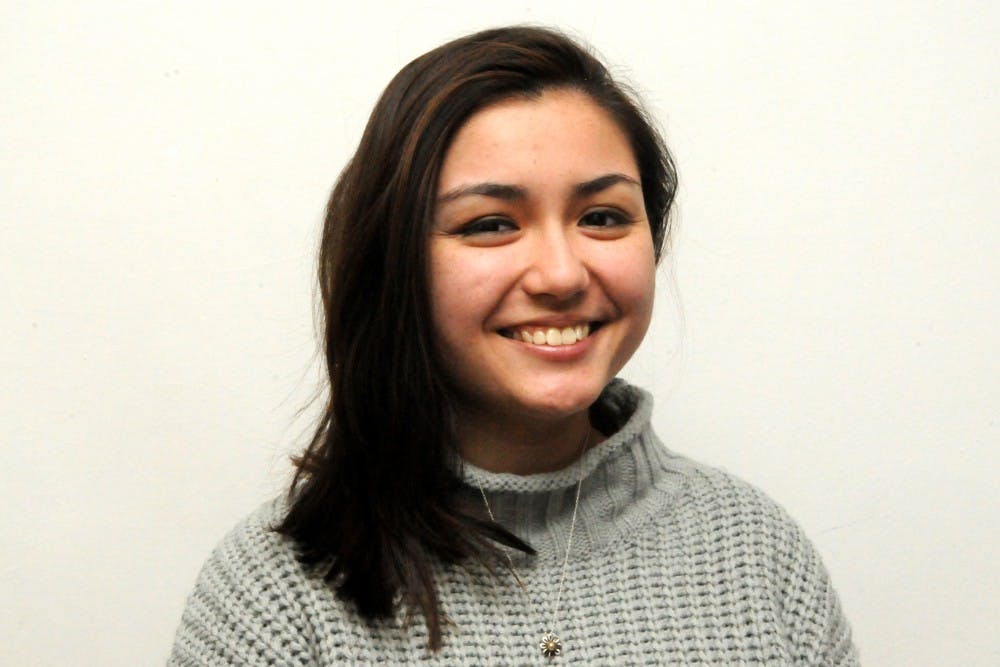With the racist GroupMe messages targeted towards black students, with the fear and mistrust that certain minority groups have felt over the election and with the deepening of rhetorical divisions between political factions, it feels like the time to reform, rise and react has come upon us. The rallying cry demands healing.
Between Nov. 9 and Nov. 16, more than 700 cases of hate crimes were recorded in the United States according to CNN, and Penn isn’t exempt from that statistic. There have been countless reactions from the Penn community as a result, from a faculty march to the United Minorities Council’s public wall of solidarity, to protests both on campus and across Philadelphia.
As such, I’ve thought constantly about healing — specifically, the healing of the individual — and what it means when the individual confronts their place in a society larger than themself. I started to imagine how art can be the key to that healing; it bears witness to both the larger societal history and the individual, personal response.
To give context, I promised myself at the beginning of 2016 to make one piece of art every day, documenting it daily on an Instagram page. Everyday I would put pen, pencil, brush or whatever other material I had, to paper. I’d respond to things in my life, things in front of me and things happening globally; I’d respond spontaneously, even unconsciously. Art was a medium through which I could react to myself and the world around me.
Sometimes I’d draw lines that went nowhere, which reflected experimentation, or I’d doodle in the margin of my notebooks, which reflected boredom. I’d draw flowers if I felt uninspired. I’d draw annoyed stick figures if I thought that my daily artistic challenge was pointless. But it never was, because I was recording something meaningful — my understanding of the world.
It wasn’t about perfecting or even completing a piece; it was simply about getting up and doing it. Sometimes this revealed to me a state of grief or anger or pain. Sometimes my work revealed nothing. Yet, by forcibly tapping into an unconscious imagination, I got to glimpse into a kind of abyss: the human “soul.” And what a profound abyss it is!
That profound abyss informs us of a very complex humanity we cannot learn from collective rallying cries, or from talks given by other people. In a time when it feels like enduring white supremacy is continuously erasing the humanity of specific groups, we must desperately clutch that humanity.
By depicting the bombing of Guernica during the Spanish Civil War, Picasso sears the human imagination with a surreal, extremely vivid portrayal of public tragedy. Reactionary art is lauded for its ability to awaken others, but not necessarily for its ability to provide a personal healing process. Imposed onto artists is thus the responsibility to educate.
But how can we ask someone who has undergone trauma, someone who finds themself continuously betrayed and repressed by a system daily, to respond to that existence every day?
Last Sunday, Feminista Jones came to Penn to speak about what happens after the election and after the anti-black sentiments cropped up on campus. She asked the question: “Why not let the wound breathe?” This is the essential question for moving forward: Do we consciously need to heal? Isn’t healing just another forced process that negates the individual’s pain?
After the harrowing past two weeks, public grief inevitably becomes internalized and, as a result, negatively affects the individual psyche. Targeted racism creates a kind of trauma for the black community that cannot be resolved so easily.
But if making art has taught me anything, it is that the daily discipline of creating (whatever that means) leads to a deep personal reckoning with that confusing abyss we possess. This abyss, that interaction between larger public events and personal reactions, needs to be understood in order to be overcome.
After the events of the election and the hate crimes that preceded it, we grapple with the existence of disparate experiences. And grappling artistically with these events gives us back our humanity. It gives us back our ability to feel, to react, to hurt, to feel angry, to feel confused, to feel lost, even to wish not to heal. But maybe that’s the paradox of the healing process: that it necessitates the revival of pain.
It is our internal humanity we must fight to keep, and by creating art, we will.
AMANDA REID is a College junior from Ho Chi Minh City, Vietnam, studying cinema studies & English. Her email address is amreid@sas.upenn.edu. “Reid About It!” usually appears every other Tuesday.
The Daily Pennsylvanian is an independent, student-run newspaper. Please consider making a donation to support the coverage that shapes the University. Your generosity ensures a future of strong journalism at Penn.
Donate




